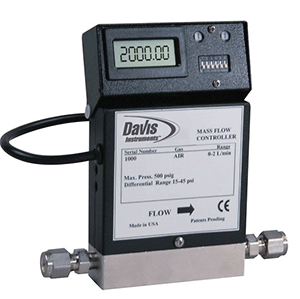If you look closely, you’ll see gas mass flow controllers used in many industrial, commercial, and OEM applications. They work with thermal sensing technology for precise gas injection and dosing.  As gas enters the controller, part of the flow is redirected into a small tube. This tube has two coils, one downstream from the other. The first coil introduces a small amount of heat into the gas stream. As the gas passes through the tube, the electronics sense the amount of heat transferred from one coil to the other.
As gas enters the controller, part of the flow is redirected into a small tube. This tube has two coils, one downstream from the other. The first coil introduces a small amount of heat into the gas stream. As the gas passes through the tube, the electronics sense the amount of heat transferred from one coil to the other.
Flow then passes into the proportional solenoid valve. This valve is controlled by the active servo electronics, which compare a set point to the actual flow rate provided by the flow sensor—and adjust the valve accordingly.
Of course, calibration drift due to aging or other factors can influence the performance and repeatability of your mass flow controller. To keep your gas flow at your desired level, your controllers should be calibrated periodically. Check your manufacturer’s recommendations for calibration cycles to sustain process efficiency.
InnoCal maintains some of the most accurate NIST-traceable standards for calibrating flow rates of almost any gas. InnoCal’s flow technicians go through extensive training on air flow calibration to ensure you can trust the measurements.